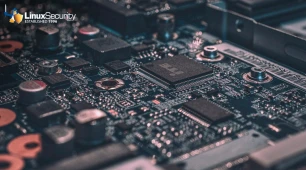
In the ongoing quest to enhance security and streamline functionality, the Linux kernel community increasingly focuses on potentially deprecated protocols that pose more harm than benefit. One such protocol is RNDIS (Remote Network Driver Interface Specification), which has become the center of discussion among developers and security experts. Initially intended for handling virtual Ethernet over USB, RNDIS has consistently been plagued by vulnerabilities and fundamental security issues, making it a concern for modern Linux-based systems.
In this article, I'll explore the implications of the potential removal of RNDIS from the Linux kernel and safer alternatives to RNDIS, providing valuable insights on how it would impact the security and performance of our systems.
Understanding RNDIS and Its Security Flaws
Microsoft originally developed RNDIS to facilitate networking over USB. While it served its purpose for a time, especially when connecting Windows and Linux systems in earlier years, its security framework was never robust. The protocol suffers from vulnerabilities that cannot easily be mitigated, mainly due to its design not aligning with contemporary security standards.
These vulnerabilities become particularly problematic when RNDIS is used in environments where untrusted devices might connect. The potential for exploitation is a genuine concern, and removing such an insecure protocol from the Linux kernel helps mitigate unnecessary risks. Understanding these flaws underscores the need to move away from RNDIS.
Recent Developments and the Push for Removal
 The conversation around disabling and eventually phasing out RNDIS from the Linux kernel isn't new. However, recent patch updates have brought this issue to the forefront. Greg Kroah-Hartman, a key figure in the Linux kernel development community, has updated the "rndis-removal" branch within the USB.git repository, signaling a renewed urgency in addressing this obsolete protocol. While this branch hasn't yet been merged into the mainline USB "next" branch — which would make it part of the upcoming Linux kernel cycle — the fact that it's being actively considered means that change could be on the horizon.
The conversation around disabling and eventually phasing out RNDIS from the Linux kernel isn't new. However, recent patch updates have brought this issue to the forefront. Greg Kroah-Hartman, a key figure in the Linux kernel development community, has updated the "rndis-removal" branch within the USB.git repository, signaling a renewed urgency in addressing this obsolete protocol. While this branch hasn't yet been merged into the mainline USB "next" branch — which would make it part of the upcoming Linux kernel cycle — the fact that it's being actively considered means that change could be on the horizon.
Security admins should anticipate that by early 2025, RNDIS drivers might be fully disabled if current efforts proceed as planned. This means proactive steps to identify and transition away from any dependencies on this protocol are not just recommended but essential.
Examining RNDIS's Impact on Windows and Android Systems
Traditionally, RNDIS has been necessary for Microsoft Windows systems, particularly those as old as Windows XP. However, modern Windows versions rely less on RNDIS due to alternative protocols and updated features that provide similar functionality without the associated security headaches. For Linux systems interacting with Windows, this shift minimizes the impact its removal might have.
On the other hand, Android has not utilized RNDIS for several years. The Android ecosystem moved away from using this protocol as part of its goal to enhance security and reliability across devices. This acceptance of newer, more secure alternatives indicates that most systems can cope without RNDIS, even across different operating systems' connectivity needs.
Ethernet-over-USB: A Safer Alternative to RNDIS

Ethernet-over-USB is a safer alternative to Remote Network Driver Interface Specification (RNDIS) that mitigates the security risks arising from RNDIS' complex and less scrutinized code base. By contrast, Ethernet-over-USB (primarily when implemented using the CDC-ECM class) typically features a more straightforward implementation, thus minimizing its attack surface and making security audits more straightforward.
Ethernet-over-USB works by encapsulating Ethernet frames within USB packets, enabling USB devices to interact like they were on an Ethernet network. This method takes advantage of its well-understood protocols for added reliability and security.
To make the switch, admins can enable the USB CDC Ethernet driver (CDC-ECM) in their kernel configuration (CONFIG_USB_NET_CDCETHER). This can be done by navigating to the kernel configuration menu (usually through make menuconfig or a similar command) and enabling the appropriate settings. Once configured and compiled, you can load the driver and enjoy a more secure networking setup over USB.
Staying Informed
As the Linux community advances toward potentially removing RNDIS, staying informed becomes crucial. Administrators should monitor official Linux kernel communication channels and resources like LinuxSecurity.com to remain updated on this initiative's progress. This involves tracking changes within the kernel's repositories and engaging with the broader Linux community to gain insights and share experiences with others facing similar challenges.
Beyond RNDIS: Embracing Secure Protocols
 The shift away from RNDIS represents a broader trend in the technology sector: the ongoing effort to adopt protocols that offer enhanced security features and align with modern industry standards. Security-minded organizations are increasingly looking to implement solutions that address vulnerabilities and protect sensitive data against emerging threats.
The shift away from RNDIS represents a broader trend in the technology sector: the ongoing effort to adopt protocols that offer enhanced security features and align with modern industry standards. Security-minded organizations are increasingly looking to implement solutions that address vulnerabilities and protect sensitive data against emerging threats.
This emphasis on security should drive admins to consider performing regular audits of their networks and protocols, seeking out potential weaknesses associated with RNDIS and across the organization's IT infrastructure. By being proactive and forward-thinking, security admins can ensure their systems are well-equipped to handle future challenges.
Our Final Thoughts on Preparing for the End of RNDIS in Linux
The potential removal of RNDIS from the Linux kernel marks a significant shift towards a more secure computing environment. While the conversations around this topic continue to evolve, Linux security administrators must start preparing for a future where RNDIS is obsolete. By understanding the reasons behind this move, assessing current dependencies, and exploring viable alternatives like Ethernet-over-USB, admins can ensure that their networks remain intact and secure. As with any operational transition, diligence, planning, and staying well-informed will be key to navigating this change successfully. Through collective efforts to adopt and implement secure protocols, the Linux community can continue to uphold the values of openness and collaboration without compromising security.

















